Dubrovnik - the jewel of the Adriatic Sea
Dubrovnik is one of the most beautiful coastal cities in the Adriatic Sea, known for its ancient stone walls and historic buildings that take the visitor on a journey through time. Tourism is an essential part of the city's economy, attracting visitors from all over the world with its natural beauty and cultural richness.
Show key points
- Dubrovnik is a stunning Adriatic coastal city famed for its historic stone walls, rich cultural heritage, and breathtaking architecture.
- With origins dating back to the 7th century, Dubrovnik evolved into a key Mediterranean trading hub and even became the independent Republic of Ragusa in the 15th century.
- Despite suffering significant damage during World War II and the Yugoslav Civil War, the city has been meticulously restored and continues to shine as a premier tourist destination.
- ADVERTISEMENT
- Major attractions include the iconic city walls, the majestic Rector's Palace, the historic Franciscan Monastery, and the beautiful Baroque-style Dubrovnik Cathedral.
- Cultural life thrives through annual festivals like the Dubrovnik Summer Festival, vibrant art galleries, and a musical heritage that showcases the city’s artistic soul.
- Nature lovers can enjoy picturesque beaches like Banje and visit the nearby Elaphite Islands, while thrilling activities such as water sports and cable car rides offer panoramic views of the region.
- From luxury hotels to local guesthouses, Dubrovnik provides diverse accommodations and an impressive culinary scene, highlighted by traditional Croatian dishes and renowned sea-view restaurants.
History of Dubrovnik
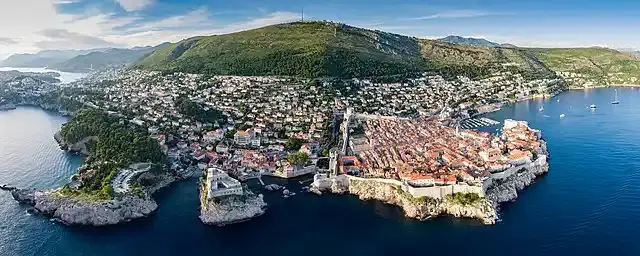
The founding of the city and its origins
Dubrovnik has its origins in the seventh century, founded by Greek refugees. The city has been promoted over the ages to become an important trading center in the Mediterranean.
Periods of government and independence
Throughout its history, Dubrovnik has experienced various periods of rule, including Byzantine and Venetian rule. In the fifteenth century, it became an independent republic known as the Republic of Ragusa, and played an important role in maritime trade.
Recommend
World War II and Yugoslav Civil War
Dubrovnik experienced devastation during World War II, and was also heavily damaged during the Yugoslav Civil War in the nineties. But the city has regained its luster thanks to reconstruction efforts.
Main sights
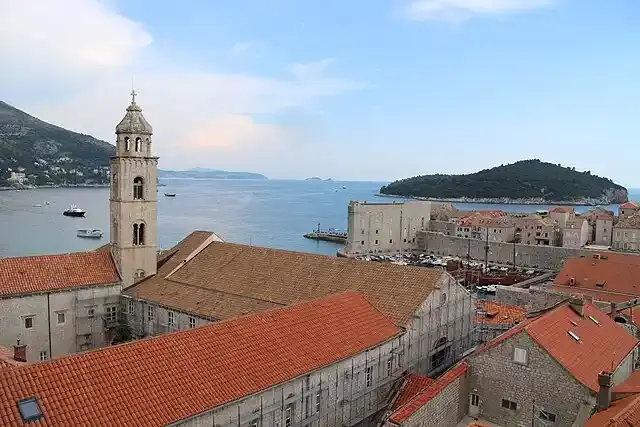
City walls
Dubrovnik's city walls are one of its most prominent historical and architectural features. The walls were built between the XII and XVII centuries, stretching for 1.94 kilometers around the fortified island.
History and significance of the walls: The walls were necessary to protect the city from attacks and maritime piracy. Thanks to these strong walls, Dubrovnik was able to withstand numerous invasions.
Tours on the walls: The ramparts offer visitors magnificent views of the Adriatic Sea and the Old Town. Visitors can purchase tickets for walking tours around the ramparts which take about two hours to explore the entire circle. Along the way, visitors can see various towers and forts such as Minista Fort and Minicata.
Rector's Palace
One of Dubrovnik's most prominent architectural monuments is the Rektor Palace and was built in the late fifteenth century. The palace was the residence of the Republican governor and was used as a building for administration and governance.
History and architectural description: The palace displays a mix of Gothic architectural styles, Renaissance and Baroque, due to its multiple reconstruction after fires and earthquakes. The grand entrance and inner courtyard of the courtyard reflect the beauty of harmonious Gothic architecture.
Exhibitions and collections: The palace now houses a museum that displays the city's long-standing history. It includes antiquities and historical documents, as well as art exhibits and antique furniture. Visitors can also see the lower cells that were used as prisons in the republican period.
Franciscan Monastery
The Franciscan Monastery is an important religious-historical monument and its construction began in the fourteenth century.
Library: The monastery library contains rare manuscripts and ancient books dating back to the Middle Ages. The library is a treasure trove for researchers and history enthusiasts.
Museum and pharmacy: The monastery also has a museum that displays a collection of religious and archaeological art pieces. One of the highlights to see is the old pharmacy dating back to 1317, one of the oldest pharmacies still in operation in Europe.
Stradun Street
It is the main street in the old city and extends 300 meters long, covered with white lime stones.
Street features: The street is full of shops, boutiques, and cafes that make it an ideal place for picnics and shopping.
Events and Festivals: Stradon Street hosts many arts and cultural events and festivals during the year, enhancing the vitality and cultural spirit of the city.
Dubrovnik Cathedral
It is a stunning baroque cathedral built in the XVIII century.
Interior design and decoration: The cathedral is distinguished by its stained glass windows and huge columns. Visitors can admire the paintings and statues that adorn the interior of the cathedral.
Treasury: The cathedral contains a treasury containing some of Europe's holiest reliqués, including a fragment of the Cross of Christ.
Cable
For an unforgettable experience, visitors can take a cable car ride from the Old Town to Mount Srd.
Views: The cable car offers exceptional panoramic views of Dubrovnik and the Adriatic islands, especially during sunsets.
Activities at the top: At the top of the mountain there is a restaurant and a war museum, as well as hiking and hiking trails.
Culture & Arts

Annual Festivals
Dubrovnik hosts many festivals, including the Dubrovnik Summer Festival, which offers open-air musical and theatrical performances, making the city a cultural hub in the summer.
Musical and artistic heritage
The city is famous for its traditional multi-colored music, as well as plastic arts that can be seen in many art galleries and museums.
Nature and beaches
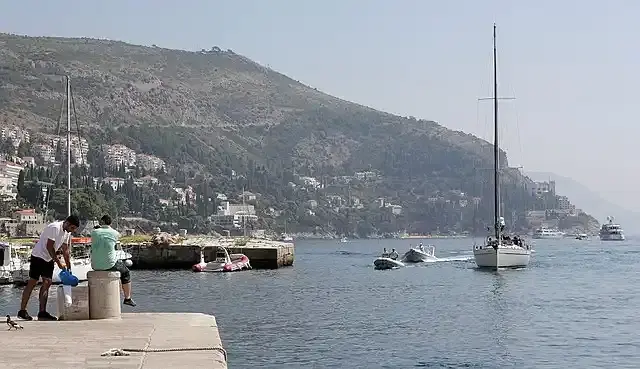
Elaphite Islands
Dubrovnik has several beautiful islands such as the Elafite Islands which can be reached via cruises. These islands offer the opportunity to enjoy swimming, fishing and water sports.
Banje Beach
Just a short walk from the Old Town, Bangui Beach is a great place to relax, soak up the sun and enjoy water sports.
Local cuisine

Traditional dishes
Dubrovnik's traditional dishes reflect the diverse influences the city has experienced through the ages. The most famous local dishes are grilled fish and traditional desserts such as "roseball".
Famous Restaurants
The city has a range of restaurants that offer distinctive dining experiences, such as Nautica, which is famous for its stunning sea views.
Activities and day trips
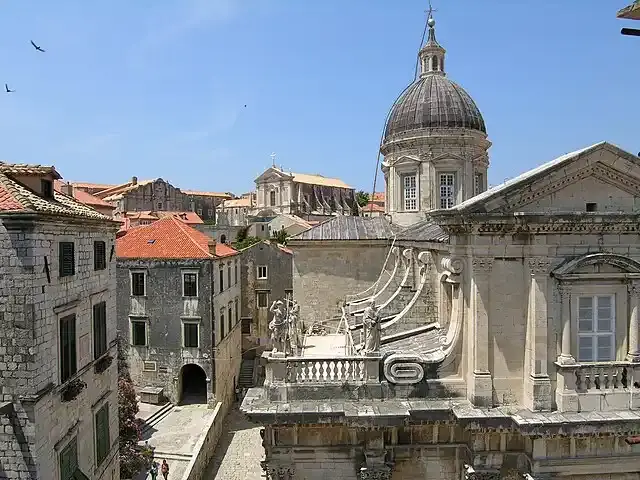
Cruises
Cruises to the islands around Dubrovnik are a great activity. Visitors can rent private boats or join regular excursions to explore the islands.
Water Sports
Dubrovnik offers many water activities such as diving and windsurfing, making it an ideal place for lovers of marine adventures.
Accommodation and accommodation
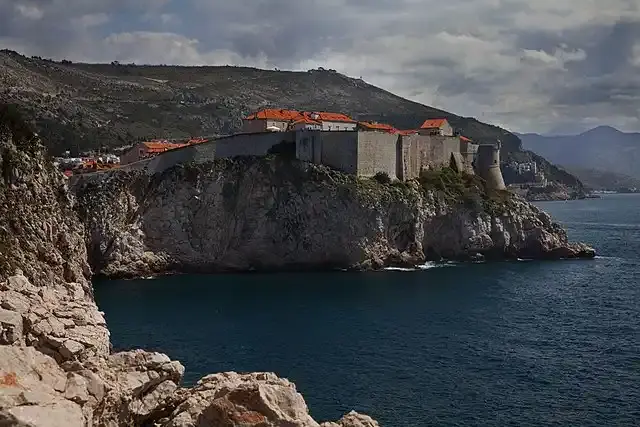
Hotels & Resorts
The city offers a variety of accommodation options to suit all budgets, from luxury hotels such as Dubrovnik Palace Hotel to more budget options.
Guest houses and apartments
For travellers looking for an authentic local experience, stay at the city's guest houses or apartments.
Tips for travelers
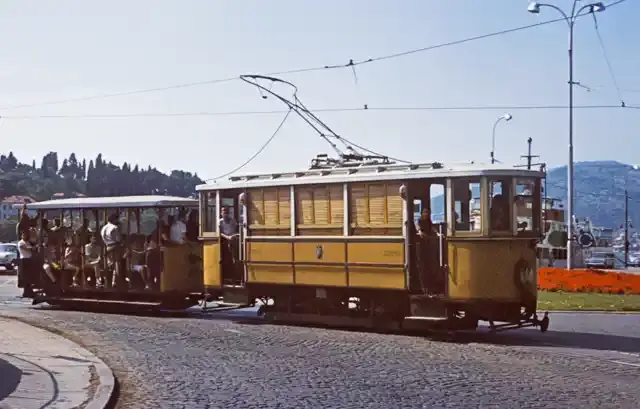
Best times to visit
Spring and autumn are best to visit Dubrovnik, where the weather is mild and the crowd is less dense.
Tips for getting around the city
Dubrovnik offers multiple means of transport such as buses and taxis, as well as the possibility of renting bicycles to explore the city.
Dubrovnik represents a unique blend of history and stunning natural beauty, making it one of the most prominent tourist destinations in the Adriatic Sea and the world. The ancient city walls, sumptuous palaces, amazing monasteries and sandy beaches are a small part of what this magical city offers visitors. Whether you're wandering its narrow cobbled streets or enjoying panoramic views from the ramparts, every corner of Dubrovnik has a unique story waiting to be discovered.
Dubrovnik's cultural and music festivals reflect the city's playful and diverse spirit, while local restaurants offer a rich experience to taste delicious traditional Croatian dishes. Various activities such as cruises, diving and exploring the surrounding islands ensure that every visitor will find something for them, whether it is an exciting water adventure or quiet moments of relaxation.
Dubrovnik maintains its global appeal thanks to its commitment to preserving its architectural and cultural heritage, while keeping pace with the development to offer a modern and integrated tourism experience. Thanks to these efforts, Dubrovnik remains an ever-attractive destination for visitors looking for a unique experience that combines the past and the present in great harmony.
If you're looking for a place that combines tradition, cultural diversity and natural beauty, Dubrovnik is waiting for you to discover. Your visit to this Adriatic jewel is sure to occupy unforgettable pages in your notebook, and will push you to return to it again and again to live new adventures.








